Carnegie Libraries in Ireland
Published in 18th-19th Century Social Perspectives, 18th–19th - Century History, 20th Century Social Perspectives, 20th-century / Contemporary History, Features, Issue 4 (Winter 1998), Volume 6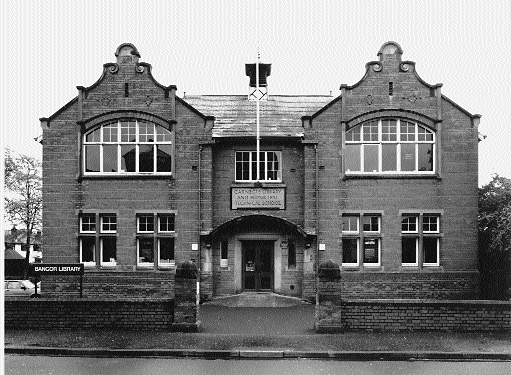
Bangor Library, County Down, designed by E.L. Wood, opened in 1910, as both a school and a library.
Andrew Carnegie (1835-1919) emigrated with his parents from Scotland to America in 1848. He became exceptionally successful in the steel business eventually gaining a near monopoly of steel production in the USA. In 1901 he sold the Carnegie Company and all its holdings to John Pierpont Morgan’s Federal Steel Company for $480,000,000. The new company became the United States Steel Corporation and Carnegie’s share in bonds was $225,639,000 par value. One of Carnegie’s first gifts, after he sold his company, was $5,200,000 to New York City for the construction of sixty-five branch libraries. Carnegie had given money for libraries before, but he was now to devote himself to a philanthropic career, and it was not long before Ireland was to benefit. By early 1905 he had pledged $39,325,240 for 1,200 libraries in English-speaking countries, and of this money $598,000 was for Ireland. He (and his trusts) were to finance more than twice that number before the library building programme came to an end. Estimates of the number of libraries he paid for vary between 2,500 and 2,509. It was not only libraries that Carnegie was interested in; he endowed trusts for universities, the advancement of science, etc.. His wealth was so vast and increasing from the interest on the capital that he found it difficult to match his philanthropic schemes with the money he had. Between 1897 and 1913 he promised over £170,000 to pay for the building of about eighty libraries in Ireland. Sixty-six of the libraries were built and sixty-two of them have survived. Although the money that Carnegie gave for Irish libraries was small in proportion to his total expenditure it greatly helped the library movement in Ireland. In 1919, 81 per cent of the towns in Ireland which had rate-supported libraries received contributions from Carnegie. This compares with 65 per cent for Scotland, and 49 per cent for England and Wales.
In 1897 Carnegie appointed James Bertram (1872-1934) as his private secretary, and the same year his scheme of library-giving was organised on a more business-like footing, and requests for money for Irish libraries were first considered. The first community in Ireland to receive a grant from Carnegie was Newtownards, County Down. It was granted £100 in 1897 to help its existing library, and promised another £1,500 in 1903 towards a new library but it was not able to avail of the promise, due it seems, to the failure to comply with a condition to raise £500 locally.
The scheme started properly in 1900 with a promise of £1,000 towards the library in Banbridge, County Down. The scheme gained momentum in 1901 reaching its peak in 1903 when gifts totalling over £49,000 were promised. Carnegie continued to pay grants for libraries until 1913 when the Carnegie United Kingdom Trust was set up. Thereafter the trust formulated its own policy but honoured promises that had already been made by Carnegie.
The procedure for obtaining a Carnegie grant
The Carnegie grants provided a strong impetus to the library movement in Ireland, by making the provision of library buildings a possibility, and a reality for the communities that went about it the right way. In most parts of the country the amount that could be raised by local taxation under the Libraries Act was inadequate to provide more than the bare bones of a library service, and hardly ever adequate to erect new buildings. One proposal to provide a library service, suggested by John P. Boland MP, a strong leader of the library movement, was to use the workhouses as central libraries and the schools as branches.
Carnegie did not formally advertise his scheme but simply entertained enquiries from properly constituted local bodies who cared to write to him. These local communities became aware of Carnegie’s generosity through reports in newspapers and periodicals. The procedure for obtaining a gift of money from Carnegie was quite simple, although not always well handled by the applicant. Normally the town clerk or chairman of the library committee wrote to Carnegie or his private secretary asking for information about the grants. He was sent a printed form asking for information about the district’s population, rateable valuation, and details of any existing library service. If the form was completed in a satisfactory manner, and there were no further questions, a sum of money was promised on condition that the Libraries Act be adopted, the rate of one penny in the pound struck for library maintenance purposes, a free site provided, and a satisfactory design for the building produced. Complying with these conditions was not always easy, due to difficulties caused by, for example, unco-operative landowners, unwilling ratepayers, or bad choice of architect. In some cases the difficulties were not overcome and several communities which were promised money never received it.
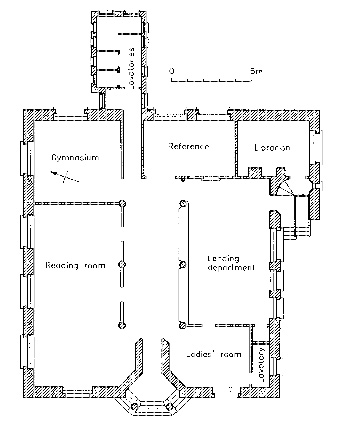
Kilkenny Library was built on a site donated by Ellen, Lady Desart, who also performed the opening ceremony on 3 November 1910. The plan reflects contemporary ideas of library layout. Members of the public were not allowed into the lending department but had to request the books they wanted to borrow. Books were read in the reference room; the ‘reading room’ was for the perusal of newspapers (by men). Ladies were expected to read in a room especially for their use; the room had a lavatory to conform with the Victorian idea of modesty-a man should never see a lady going to the lavatory. The gymnasium was included to allow the Corporation raise an additional 1/2d in the £ under the Gymnasium Act.
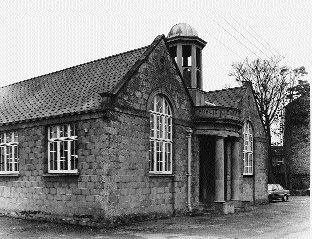
Grants would only be given for libraries which were to be owned and maintained by the community. This was made clear by Bertram in a letter he wrote on 5 July 1910 to Revd. H.E.C. Marshall of Occold, near Eye, Suffolk, England (The same procedures were followed in England):
Your Reading Room and Hall may be for every one in the Parish, but is it controlled by every one in the Parish or is [it] to be in connection with the Church and therefore not under secular control?
About £40 per annum would usually be regarded by Carnegie as a minimum sum to maintain a small library. Delgany, County Wicklow, was refused a library because its estimated income would have been less than £20 per annum. The maximum grant that would be given was twenty times the income from the rates; so, for example a district with an income of £100 from the rates for the library would be unlikely to be given more than £2,000. Carnegie felt that there should always be well-off people in the locality who should provide a site, and their donation, in addition to the support of the ratepayers through the penny rate, would be a fair contribution when put alongside his own gift. Complaints were often made that while Carnegie gave money for libraries, the maintenance of them fell heavily on the rates. His answer was that if people were not in a position to help themselves he did not want to help them. He believed that charity (in most cases) was corrupting.
Carnegie’s rule that he would only contribute where there was a need for a library must have seemed unjust to those communities that had already provided good library facilities but were struggling to improve them. The public library in Dundalk, County Louth was well run, the librarian was a member of the Library Association and was well informed on library matters. In 1901 the library committee was adapting the grammar school for use as a library at a cost of about £1,200 and it applied to Carnegie for a grant which was refused. They sought the intervention of Dr Hew Morrison (chief librarian at Edinburgh library and an advisor to Carnegie) who reported I had the pleasure of explaining to Mr Carnegie your position but as his Secretary remarks, he did not seem inclined to come to your assistance with a grant, believing that as a library was in existence already your community would see to it that it was made useful for the purposes for which it was instituted.
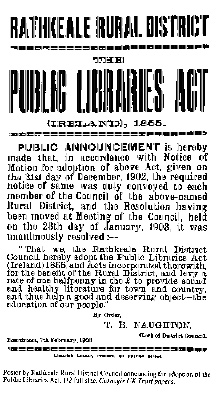
When Lennox Robinson was visiting the Carnegie libraries, in 1915 and 1916 to report on their condition to the Carnegie trustees, he visited Dundalk library, thinking it was a Carnegie library and learning that the flat refusal of fifteen years previously was still remembered, he reported to the trustees that
The only place I was received with real abuse was at Dundalk, which possesses a library which I thought was a Carnegie benefaction. It turned out to be a very old-established free library which had applied to Mr Carnegie for money to rebuild some years ago but had not been successful in its application, so it was with immense relish that a rather acid-faced lady librarian told me exactly what she thought of Mr Carnegie and his works.
After 1906 all the library plans had to be submitted to Bertram for approval before any money would be paid. This condition caused some communities delays in their efforts to satisfy Bertram’s exacting requirements. Bertram was quick to notice poor library planning and costly designs made at the expense of library accommodation. Thus he had a strong influence on the planning of the Carnegie libraries in Ireland.
Gifts of church organs
Carnegie was invited to involve himself with other worthy causes in Ireland but he confined himself to library buildings. He did, however, include Ireland in his organ-giving scheme. Organs were built with Carnegie’s money in, among other places, St Mary’s Cathedral, Limerick (Church of Ireland); First Presbyterian Church, Ballynahinch, County Down; St Paul’s, Cork (Church of Ireland); Cashel Cathedral, County Tipperary (Church of Ireland); St Michael’s, Dún Laoghaire, County Dublin (Roman Catholic); Lisburn Road Methodist Church, Belfast; and First Presbyterian Church, Comber, County Down.
The distribution of the libraries
Carnegie hardly ever initiated an offer of help to establish a library, and never in Ireland. Thus the libraries are unevenly distributed and do not answer the needs of the population as a whole. They are concentrated in the Dublin area, the Belfast area, Waterford, east Cork, Kerry, and west Limerick. There are no Carnegie libraries in twenty-one of the thirty-two counties in Ireland. The greater number are in the Dublin area, as would be expected due to the greater population and the greater valuation of a capital city. What is surprising is the number of libraries in Limerick, and Kerry. The reason has nothing to do with population or rateable valuation. Donegal, a county roughly the same size as Kerry, had a population of 168,537 (1911 census) and a rateable valuation of £314,368 in 1911, compared with Kerry with a population of 159,691 and a rateable valuation of £311,932. Limerick could likewise be compared with neighbouring counties Clare, Galway, and Tipperary in terms of population and rateable valuation and the statistics would not suggest any special reason why these counties should have no libraries and Limerick should have fifteen. Fifteen seems a large number but most of the libraries were very small and they were built with grants amounting to £6,780.
The libraries in Limerick were built by two district councils, Rathkeale and Newcastle West. The councillors gave in to pressure from small localities to provide library buildings, and there would have been more if it were not for the efforts of the Carnegie UK Trust to curb the numbers. It is also likely that there was some rivalry between the councils.
Lord and Lady Monteagle, Thomas O’Donnell, and John Pius Boland
The library movement in Limerick was helped by Lord and Lady Monteagle of Mount Trenchard, Foynes, in the interest they took in rural development and in the provision of library buildings. Elizabeth, Lady Monteagle was a member of Rathkeale Rural District Council and a member of the library committee, and it is likely that she was influential in guiding the committee. She was entrusted with the task (probably at her own suggestion) of calling on Carnegie, when he was to be in Limerick to lay the foundation stone of Limerick library and receive the freedom of the city. The purpose of the meeting was to ask Carnegie to increase the grant for the Rathkeale libraries by £1,000, and he agreed to do so.
Two people were responsible for the large number of libraries in Kerry. They were Thomas O’Donnell (MP for West Kerry 1900-1918) and John P. Boland (MP for South Kerry 1900-1918). Thomas O’Donnell visited the Carnegie steel works in Pittsburgh while on a fund-raising tour of the United States with his party leader, John Redmond, in the autumn of 1901. While there he heard Carnegie talking about his scheme of library giving. A few months later in June 1902 he started his efforts to have public libraries established in his constituency by writing directly to Carnegie with a request for £1,500 for a library in Tralee. Due to the tardiness of Tralee Urban District Council, the library would never have been built. It was only the persistent efforts of O’Donnell which finally resulted in a completed building in 1916, with a contribution from Carnegie of £3,000. He made the same efforts for Killorglin, carrying on all the correspondence with Bertram, until a building was opened in 1909. He was also responsible for the library at Dingle which involved another long struggle lasting from 1909 until 1918.
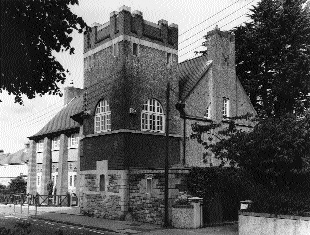
Clondalkin library, Dublin, designed by T.J. Byrne and opened in 1910.
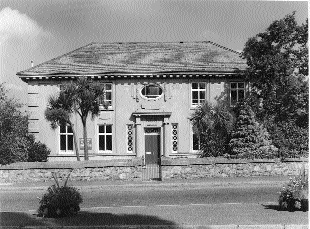
Dundrum library, Dublin, designed by R.M. Butler and opened in 1914.
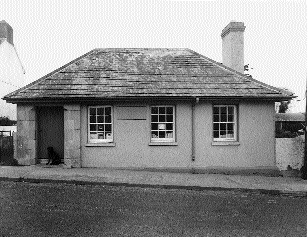
Athea library opened in 1917 and was one of the many small libraries established in County Limerick.
Even then the library could not be used for ten years due to a dispute over the site. O’Donnell wrote to Bertram many times asking for an interview with Carnegie to discuss the establishment of libraries in Kerry, but an interview was never granted. O’Donnell was trying to persuade the district councils in Kerry to adopt the Libraries Act and he wanted to have some sort of personal endorsement from Carnegie; he wrote to Bertram on 8 October 1905 saying that ‘…[it] would make my position all-powerful if I could say to each of those Boards that you would give a grant to each of them that would put the Libraries Act into force’. Not only did O’Donnell use all the persuasion he could muster to get the Kerry councils to adopt the Libraries Act and build libraries but he (and John P. Boland) initiated the Public Libraries (Ireland) Act 1902. After the passing of the 1902 Act, O’Donnell sent a circular to each of the 1,500 members of the Irish National Teachers Organisation explaining the Act, saying what sort of books should be in the libraries, and advising that all councillors have their powers under the Act explained. He expressed the optimistic hope that almost all the nationalist councils in the country would have put the Act into operation before the end of 1903.
John Pius Boland is perhaps best known today (in sporting circles) for winning a gold medal for lawn tennis at the Olympic Games in Athens in 1896. He was born in 1879 and educated at Edgbaston Oratory, Christ Church, Oxford, Bonn and London Universities. He was called to the Bar in 1897. He was a member of the Dublin Commission for setting up the National University of Ireland in 1908 and a keen advocate of the Irish language. He died in March 1958. He was a tireless worker in the cause of the library movement and was involved in founding the Irish Rural Libraries Association. The objects of this association were to disseminate information to rural district councils about the facilities available for establishing rural libraries, to study those that existed and to assist local communities in starting libraries, to draw up a suitable list of books, and to publish articles and pamphlets on the subject of libraries. Just as O’Donnell was pressing the district councils in his constituency to adopt the Libraries Act so was Boland in his. Boland was also willing to assist any community with advice or to stimulate their interest with a public lecture on the subject of libraries.
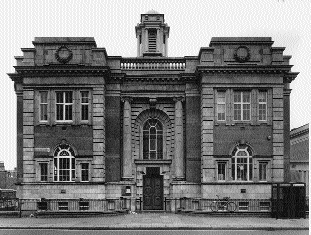
Rathmines library, Dublin, designed by Batchelor and Hicks and opened in 1913.
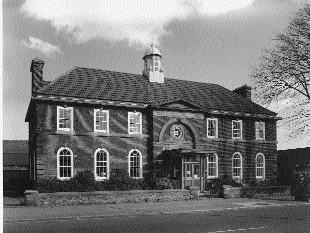
Pembroke library, Dublin, designed by Kaye-Parry, Ross and Hendry, opened in 1929, the last Carnegie library built in Ireland.
The present condition of the libraries
Many of the communities that sought grants from Carnegie gave into the temptation to ask for more money than necessary. The result was library buildings that were too big for the library needs of the communities. The extra space was used for other activities, such as dancing, concerts, etc.. This was not a bad thing as it undoubtedly brightened the lives of people living in rural districts, but it was not how Carnegie wanted to help the ‘toiling masses’ better themselves. The libraries in the cities were almost invariably managed and used as Carnegie intended them to be. Most of the buildings are still in use as libraries, others have been superseded as libraries but are still owned and used by the community, a few have been sold, and a very few have become derelict or been demolished. The libraries are an important part of our architectural heritage and the study of how they came to be built and used gives many insights into Irish life at the beginning of this century.
Brendan Grimes is a lecturer in the School of Architecture, Dublin Institute of Technology.
Further reading:
B. Grimes, Irish Carnegie Libraries: A Catalogue and Architectural History (Dublin 1998).
M. Casteleyn, A History of Literacy and Libraries in Ireland (Aldershot 1984).
W.J. Murison, The Public Library its Origins, Purpose and Significance (London 1955).
M. Neylon & M. Henchy, Public Libraries in Ireland (Dublin 1966).
















